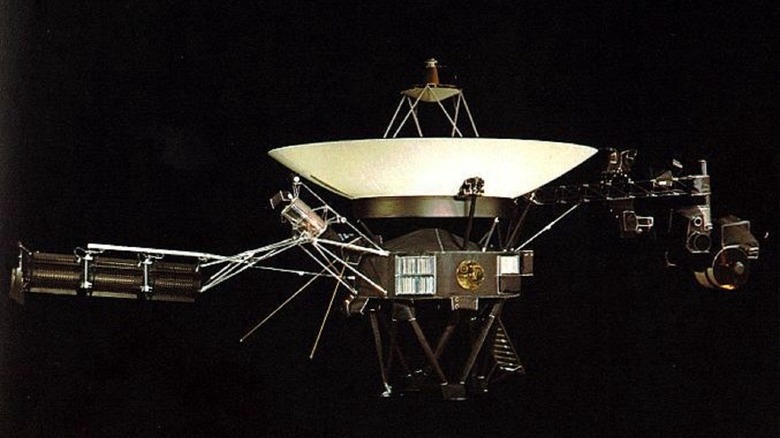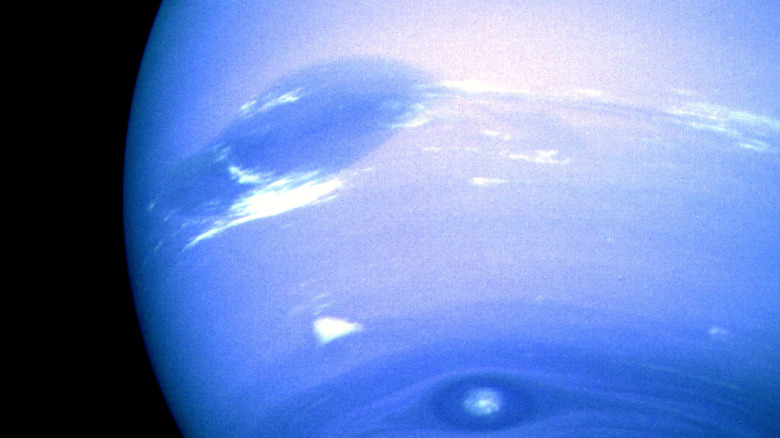This Is The Only Spacecraft That's Ever Flown By Neptune
Neptune, the eighth planet from the sun, has only ever been visited by a single spacecraft. This lonely planet resides in the outermost corners of our solar system, making it hard to drop by for a visit. After its discovery in 1846, it remained unvisited until the summer of 1989, when Voyager 2 flew 3,000 miles above its north pole.
Voyager 2 launched in August of 1977, taking 12 years to reach Neptune after it left Earth. The reason it took over a decade for NASA's spacecraft to reach the distant planet may have something to do with the fact that Neptune is 30 times further from the sun than Earth. Luckily, once it arrived, Voyager 2 was able to study Neptune for several months before continuing into interstellar space (via NASA). Voyager 2 was even able to study Neptune's largest moon, Triton, a strange, dense, icy moon that orbits its planet in the opposite direction of Neptune's rotation, according to NASA.
Voyager 2 also flew by Jupiter, Saturn, and Uranus
During Voyager 2's road trip through space, Neptune wasn't the only planet on the itinerary. The spacecraft was also able to perform flybys of Jupiter, Saturn, and Uranus on its journey through the solar system, studying and taking pictures of the planets as well as some of their moons. This iconic man-made interstellar investigatory machine is responsible for many famous photos of these four planets with a new discovery about Neptune's atmosphere catching the eye of scientists.
Voyager 2 is the only spacecraft, so far, to study all four of the gas giant planets in our solar system: Jupiter, Saturn, Uranus, and Neptune. It made many amazing discoveries during its trip through the solar system, finding a new moon around Jupiter, 10 new moons and two rings around Uranus, and five moons, four rings, and a "great dark spot" (pictured) at Neptune (via NASA).
There are currently no scheduled missions to Neptune
Currently, there aren't any scheduled missions to Neptune, although several have been proposed. In 2021, NASA considered a mission named Trident, which would have flown by Neptune and its largest moon Triton in a similar way to Voyager 2, but with better technology for a more in-depth study of the planet and its moon. If it were funded, Trident would have launched in 2026 and arrived at Neptune around 2038. Trident was ultimately passed over for two missions to Venus named DAVINCI and VERITAS.
Another mission that has been proposed to visit the eighth planet is known as the Neptune Odyssey Mission. If funded, the mission would need to launch by 2031 in order to get a boost from Jupiter's gravity, and in doing so it would arrive at Neptune in 2043. If it were launched later than 2031, the spacecraft would miss Jupiter's boost which would then make the journey to Neptune an agonizing 16 years (via The Planetary Society). Currently, it is unknown when humanity will send other probes to visit the distant planets of our solar system.


